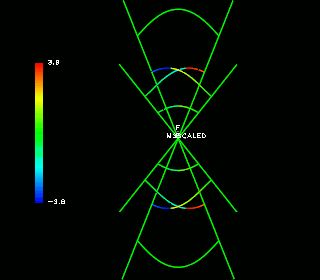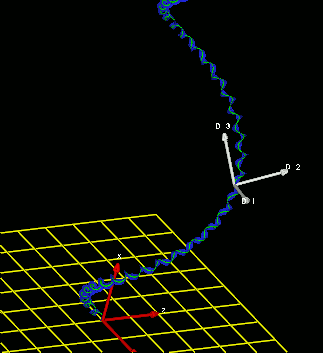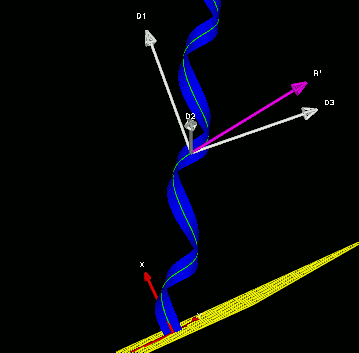



Several researchers associated with the LCVM of the Institute for Physical Science and Technology at the University of Maryland and with the LCVM2 at the EPFL are interested in using elastic rods as a model to approximate the supercoiling of DNA molecules. As applied mathematicians, with a specialization in rod mechanics, we find modelling DNA a novel and fascinating application of classic mechanics theories. Interests vary from the analysis of statics of rods, to the dynamics of rods, all with applications to DNA and other chain like macro-molecules in mind, and with an emphasis on efficient computation and the exploitation of advanced visualization techniques. The static theory can be broken into two sub-categories; the initial value problem and boundary value problems. Slinky is a graphics and computation package dealing with the initial value problem, and the package PCR is for the boundary value problem.
Dr. John H. Maddocks directs a research group comprising several post-docs and students in continuing research pertaining to the elastic rod model of DNA. A survey paper by Dichmann, Li and Maddocks gives an overview of some of the research conducted. Dr. Yiwei Li has studied the boundary value problem arising in statics and developed appropriate numerical continuation methods. Dr. Donald J. Dichmann is interested in the dynamic theories of rods. Dr. Rob Manning is working on fitting a continuous rod to the unstressed configuration corresponding to a given DNA sequence and implementing static equilibrium computations on that rod. Stefan Kehrbaum is currently considering qualitative behavior and averaging theories applied to elastic rod equilibria. Randy C. Paffenroth has worked extensively on graphics and computations associated with the DNA problem, specifically the Slinky and PCR packages mentioned above. Kathleen A. Hoffman is a co-author of Slinky and is currently working on an analysis of stability properties of equilibria, and an associated problem of Reel.